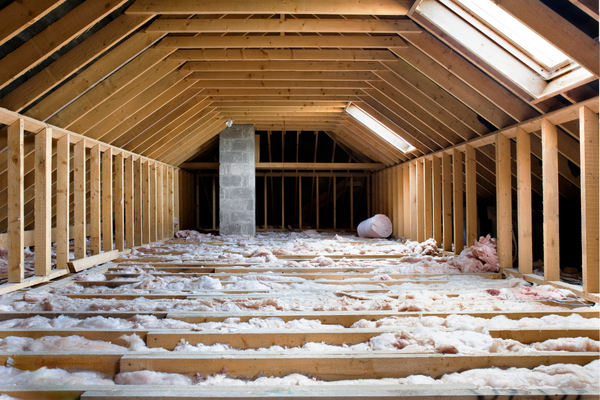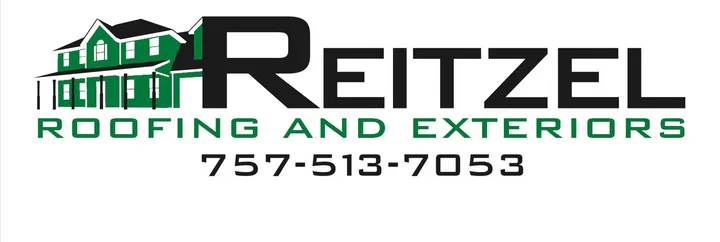LEARNING CENTER
CHECK OUT SOME OF OUR LATEST ARTICLES FROM IN OUR LEARNING CENTER

Roofing Contractor Explains Significance of Attic Ventilation
When it comes to attic ventilation, you need an experienced roofing contractor you can trust. Attic ventilation plays an important role in the overall health of your roof and home, and a qualified roofing contractor can help you make sure your attic is properly ventilated. In this blog post, you'll learn everything you need to know about attic ventilation from a roofing contractor's perspective, including the different types of ventilation, why it's important, and how to maintain it.
The Importance of Attic Ventilation
Attic ventilation is an essential part of keeping your home cool and reducing energy costs. Proper attic ventilation is important for several reasons. It prevents the build-up of moisture, which can cause rot, mold, and other damage to the structure of your home. It also helps keep the temperature in your attic at a comfortable level, so that you don’t have to waste energy cooling it down. And finally, attic ventilation helps to prevent ice dams from forming during cold weather, which can cause serious damage to your roof.
When it comes to attic ventilation, the most important thing to remember is that there needs to be a balanced system of both intake and exhaust vents. Intake vents allow outside air to enter the attic, while exhaust vents allow hot air to escape. This balance of air circulation helps reduce heat buildup in your attic and keeps it at a comfortable temperature year-round. Without proper ventilation, your home’s energy bills can skyrocket as it struggles to keep your attic cool.
Another important factor to consider when it comes to attic ventilation is the size of your vents. The size of the vents will depend on the size of your attic and the number of vents you need. Your roofing contractor can help you choose the right size and number of vents for your home.

How Attic Ventilation Works
Attic ventilation is an important component of a home’s overall energy efficiency and durability. Attic ventilation works by helping to keep the temperature in the attic at an appropriate level and by removing excess moisture from the attic space. Without proper ventilation, your attic can become too hot in the summer and too cold in the winter, leading to serious damage to your roof and other structures.
The primary components of attic ventilation are air vents, which are typically located near the eaves or along the ridge line of your roof. These vents allow air to move in and out of the attic, helping to keep the temperature inside balanced. In the winter months, this helps to keep warm air from accumulating and causing ice damming on your roof. In the summer months, these vents help draw out hot air and maintain cooler temperatures inside the attic.
Another important component of attic ventilation is an exhaust fan, which helps to draw out moist air from the attic. Exhaust fans are usually installed near the roof peak and should be large enough to handle the size of your attic. The fan must be vented directly outdoors to ensure proper airflow.
Finally, insulation plays a key role in maintaining proper attic ventilation. A well-insulated attic will keep heat and moisture from entering through the roofline, while also keeping the warm air inside during colder months. Properly-installed insulation will also help reduce energy bills and make your home more comfortable.
Attic ventilation is an essential part of any home’s roofing system and should be properly maintained in order to ensure that your roof remains healthy and durable for years to come.
Tips for Choosing the RIght Attic Vents for Your Home
Choosing the right type of attic vent for your home is an important part of keeping your attic and roof healthy. There are many types of attic vents to choose from, including ridge vents, soffit vents, gable vents, turbine vents, and power vents. Here are some tips to help you make the right choice:
1. Consider the type of roof you have: Different types of roofs require different kinds of ventilation. For example, if you have a metal roof, you may need to use a combination of ridge vents and soffit vents. If you have a shingle roof, you may be able to use ridge vents or power vents.
2. Consider the climate you live in: Depending on your climate, you may need to install vents with higher or lower airflows. In hotter climates, you’ll need to install more powerful vents to keep your attic cool. In colder climates, you may want to consider installing a low-profile vent that won’t get blocked by snow buildup.
3. Consider your budget: It’s important to consider your budget when deciding which type of attic vent to install. Ridge vents and power vents can be more expensive than other types of attic vents, but they may provide better performance and last longer.
By following these tips, you can make sure that you choose the right attic vents for your home and ensure that your attic and roof remain healthy for years to come.

Our Services
Roof Repairs
Roof Leaks
Roof Storm Damage
Roof Replacement
Residential Roofing
Commercial Roofing
Siding
Trim
Windows
Fencing
Decks
Resources
Learning Center
Financing
Areas We Service
About Us
Contact Us
Privacy Policy
Copyright © 2022 Reitzel Roofing and Exteriors
All Rights Reserved
Our Services
Resources










